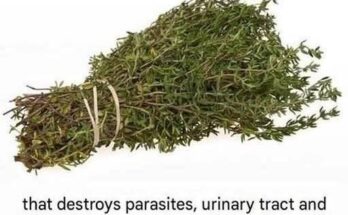The human body is a complex system that thrives on balance, diversity, and connection — and the same principle applies to nutrition. What we eat matters, but how we combine foods can be just as important. Nutritional synergy is the concept that certain foods, when eaten together, can improve the body’s ability to absorb, utilize, and benefit from nutrients. Instead of viewing individual nutrients in isolation, nutritional synergy emphasizes the powerful interactions that occur when whole foods are combined thoughtfully.




Understanding Nutritional Synergy
In simple terms, nutritional synergy refers to the way nutrients work better in combination than on their own. Just as an orchestra sounds better than a single instrument, the body processes nutrients more efficiently when they arrive as part of a team.
For example, pairing foods rich in vitamin C with iron-containing plant foods can dramatically increase iron absorption. Likewise, combining healthy fats with fat-soluble vitamins (A, D, E, and K) enhances how effectively your body takes in those nutrients.
This concept is at the heart of traditional diets around the world — think of the Mediterranean diet’s combination of olive oil, vegetables, and fish, or the traditional Indian pairing of lentils and rice. These food combinations didn’t arise by accident; they evolved through centuries of observation and experience.
How Nutrients Work Together
To understand why nutritional synergy matters, it helps to look at what happens at the cellular level. When you eat, your body breaks food down into its basic components — vitamins, minerals, amino acids, and fatty acids. These nutrients interact in the digestive tract, bloodstream, and even within cells, influencing each other’s absorption and effectiveness.
Some nutrients need specific companions to be absorbed efficiently, while others may compete for absorption. For instance, calcium and iron can inhibit each other when consumed in large amounts at the same time. On the other hand, vitamin C helps convert plant-based (non-heme) iron into a form the body can use more readily.
Let’s look at some of the most powerful examples of nutritional synergy in action.
1. Vitamin C and Iron: A Classic Combination
One of the best-known examples of nutrient synergy involves vitamin C and iron. Plant-based sources of iron — such as spinach, lentils, and beans — contain non-heme iron, which is not as easily absorbed by the body as the heme iron found in animal products. However, when these foods are eaten with a source of vitamin C, such as citrus fruits, bell peppers, or tomatoes, absorption can increase up to threefold.
Example meal idea: A spinach and chickpea salad topped with orange segments or a squeeze of lemon juice.
This combination is especially valuable for vegetarians, vegans, and anyone with low iron levels, as it maximizes nutrient availability naturally.
2. Healthy Fats and Fat-Soluble Vitamins
Vitamins A, D, E, and K are all fat-soluble, meaning they require dietary fat for absorption. Without fat, your body can’t effectively use these essential nutrients. This is why adding a drizzle of olive oil to vegetables or including avocado in a salad makes such a difference nutritionally.
Example meal idea: Roasted carrots (rich in beta-carotene, a precursor to vitamin A) tossed with a bit of olive oil or avocado slices.
Even something as simple as cooking vegetables in a small amount of healthy fat can significantly boost the bioavailability of these vitamins.
3. Turmeric and Black Pepper: A Powerful Pair
Turmeric contains curcumin, a compound celebrated for its anti-inflammatory and antioxidant properties. However, curcumin alone is poorly absorbed by the body. The addition of black pepper, which contains piperine, can increase curcumin absorption by up to 2000%.
Example meal idea: Golden milk made with turmeric, a pinch of black pepper, and a bit of coconut milk for healthy fats.
This simple spice combination exemplifies how traditional cooking practices have long harnessed natural synergies for better health.
4. Lycopene and Healthy Fats
Lycopene is a powerful antioxidant found in red and pink fruits such as tomatoes, watermelon, and pink grapefruit. Like other carotenoids, lycopene is fat-soluble, meaning its absorption improves when eaten with fats. Cooking tomatoes also helps release lycopene, making it more bioavailable.
Example meal idea: Tomato sauce simmered in olive oil or fresh tomatoes drizzled with a bit of extra-virgin olive oil and served with avocado.
This is one reason the Mediterranean diet, rich in both olive oil and tomatoes, is linked to heart health and longevity.
5. Calcium and Vitamin D
Calcium is vital for strong bones and teeth, but without adequate vitamin D, your body cannot absorb or use it efficiently. Vitamin D helps regulate calcium transport and bone metabolism.
Example meal idea: A breakfast of fortified yogurt or plant milk (for calcium) paired with a short morning walk in the sunlight (for vitamin D synthesis).
For those who live in areas with limited sun exposure, combining calcium-rich foods with vitamin D–fortified options can make a significant difference.
6. Zinc and Protein
Zinc, an essential mineral for immune health and wound healing, is better absorbed when consumed alongside protein. Animal-based proteins such as meat, poultry, and seafood are particularly effective sources because they naturally contain both nutrients in balanced amounts.
For vegetarians, combining zinc-rich foods like pumpkin seeds or lentils with protein from legumes or tofu can also support absorption.
7. Folate and Vitamin B12
Folate and vitamin B12 work hand in hand in the body to support DNA synthesis, cell formation, and proper neurological function. A deficiency in one can affect the other’s activity.
Example meal idea: A breakfast of eggs (rich in B12) and leafy greens (rich in folate) provides a synergistic boost to energy and metabolism.
8. Prebiotics and Probiotics: The Gut Health Duo
The gut microbiome plays a central role in nutrient absorption, immune function, and overall wellness. Probiotics — the beneficial bacteria found in fermented foods — thrive when fed with prebiotics, which are types of fiber found in foods like garlic, onions, bananas, and oats.
Example meal idea: Yogurt topped with sliced banana or kefir blended with oats and honey.
This combination supports a balanced gut microbiome, enhancing the body’s ability to absorb and utilize nutrients from other foods.
9. Whole Grains and Legumes
Combining whole grains and legumes — such as rice and beans or lentils and barley — creates a complete protein profile, providing all essential amino acids. This synergy is especially valuable in plant-based diets where protein diversity is key.
Example meal idea: Lentil soup served with a slice of whole-grain bread or traditional rice and beans.
Why Food Pairing Matters for Health
Modern diets often emphasize individual nutrients or supplements, but the body doesn’t process isolated vitamins the same way it does whole foods. Nutritional synergy reminds us that food is more than the sum of its parts. When you pair the right foods, you’re not only enhancing absorption — you’re improving digestion, metabolism, and long-term health outcomes.
These combinations can:
- Improve energy and mood by supporting balanced nutrient intake.
- Enhance immunity and reduce inflammation.
- Support better heart, bone, and digestive health.
- Reduce nutrient deficiencies naturally, without relying solely on supplements.
Tips for Maximizing Nutrient Absorption
- Eat a variety of colorful foods: Different colors indicate different nutrients, and variety ensures you get a wide range of synergistic benefits.
- Don’t fear healthy fats: Incorporate sources like olive oil, nuts, seeds, and avocado to help absorb fat-soluble vitamins.
- Use herbs and spices wisely: Many traditional spice combinations, such as turmeric with pepper or ginger with citrus, boost bioavailability.
- Avoid nutrient inhibitors: Excess caffeine, alcohol, or processed foods can block nutrient absorption.
- Embrace traditional food pairings: Centuries of culinary wisdom often hide deep nutritional logic.
The Takeaway
Nutritional synergy is about more than eating healthy foods — it’s about eating them together in ways that amplify their benefits. When we combine foods intelligently, we unlock their full potential, supporting the body’s natural systems of absorption, repair, and renewal.
The next time you prepare a meal, think of it as creating harmony on your plate. Add a squeeze of lemon to your spinach salad, a drizzle of olive oil over your vegetables, or a sprinkle of black pepper on your turmeric dish. These small, intentional choices can transform ordinary meals into powerful tools for long-term wellness.



